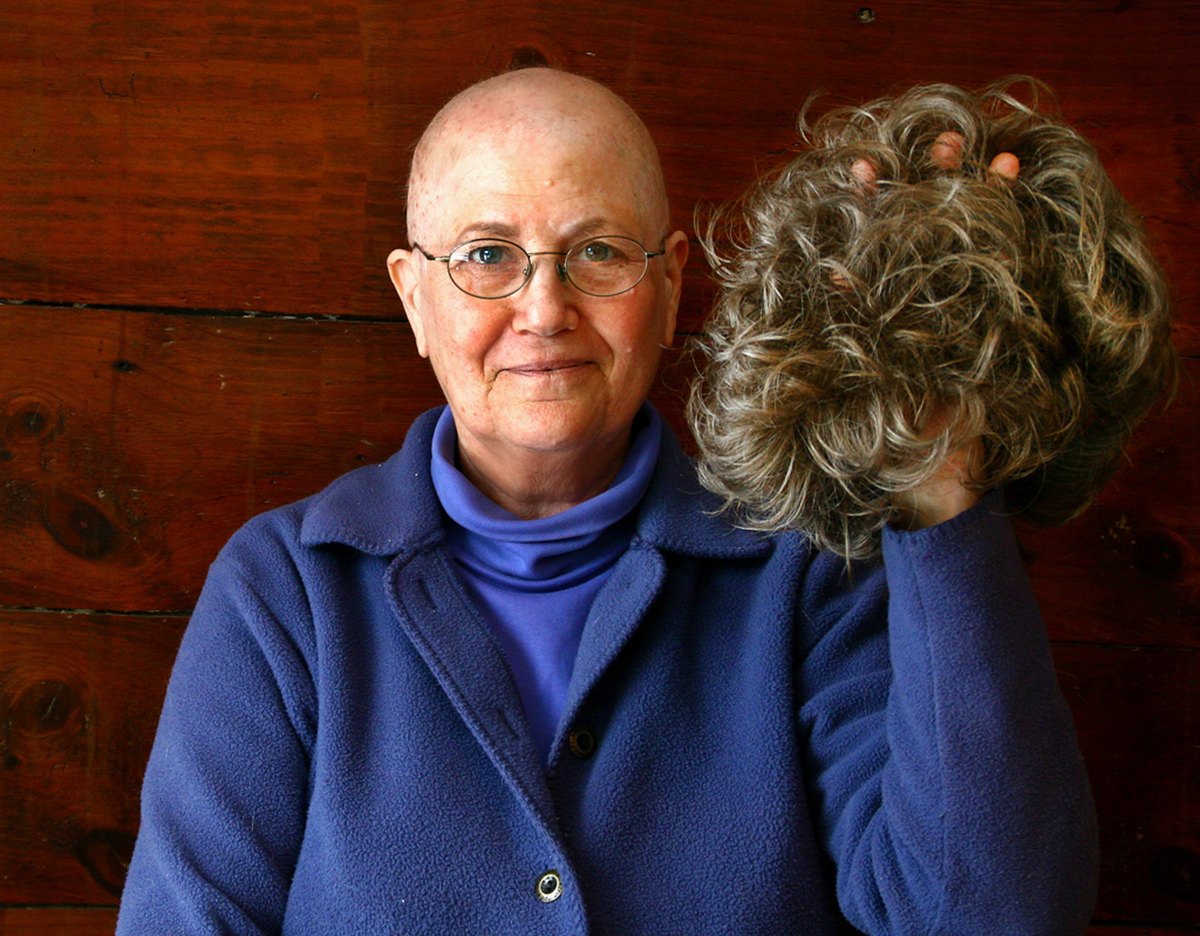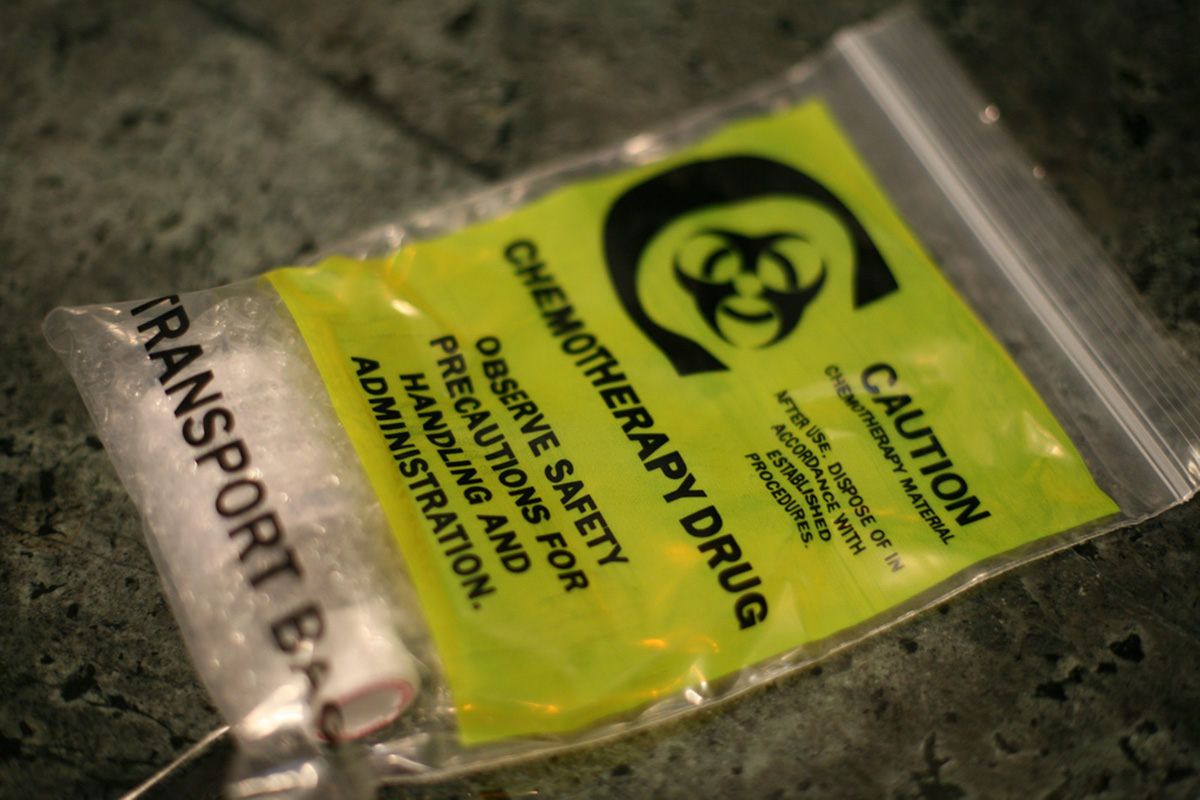Most cancer patients don’t really think about the importance of their hair until they face the possibility of losing it. Your appearance, of course, changes drastically. Loss of hair also affects simple things like keeping your head warm in cold weather, or avoiding sunburned ears and scalp, or bumps and scrapes that never were a problem before all your hair fell out.
Both men and women fear the loss of hair during cancer treatment. Many oncologists report that the first question patients ask about chemotherapy is not “Is it going to cure me?” but rather “Is it going to make me lost my hair?” It’s hard to maintain a healthy body image without your hair. A new and easier method of an old technique for sparing your hair, is now available in Europe and the USA.
Keeping a Cool Head During Chemotherapy
The DigniCap Cooling System (manufactured by Dignitana Inc, in Lund, Sweden), already available in the European Union, has been tested at several hospitals in the United States and recently received approval from the American FDA. The device made its American debut at the San Antonio Breast Cancer Symposium in December 2015.

Here’s how it works:
About 30 minutes before a chemotherapy session, patients strap on a tight-fitting cap that is connected to a refrigerator-sized cooling machine (about the size of a European refrigerator, not the “double decker” American version). The machine chills the scalp to about 5 degrees Celsius (41 degrees Fahrenheit), without freezing the skin, until the scalp is numb. Then the chemotherapy infusion begins. Patients stay hooked up to the machine during the entire chemotherapy session, and for another 90 minutes as the concentrations of chemotherapy drugs in their bloodstreams begin to drop.
Near-freezing temperatures keep chemotherapy drugs from reaching hair follicles. There may be situations in which this not a good thing, if stray cancer cells have already managed to reach the scalp. Most cancer patients, particularly when they are first diagnosed, are willing to take the risk of less than 100 percent destruction of their cancers when there is a possibility of keeping their hair. Fortunately, the risk of recurring cancers of the scalp is very, very low.
How Well Does the Cool Cap Work?
Most users of cool caps and similar devices manage to keep about half of their hair. There can be more hair loss on the crown of the head where the cap does not fit as snugly. There can be side effects:
- Cold-induced headaches, similar to a “brain freeze” when eating ice cream too fast.
- Neck and shoulder discomfort from sitting still to hold the cap in position for more than two hours.
- Joint pain from the cold affecting the jaws and neck.
READ MammaPrint Can Help You Avoid Chemotherapy
However, many users of the device are willing to undergo the potential pain and inconvenience of the device to be able to go out in public without looking sick. One user commented “I’m just glad I can go to the grocery store without people asking me how my chemotherapy is going.” The cost of using the device is $1500 to $3000 for each round of chemotherapy.
What Can You Do If A Cold Cap Is Not Available?
Because the cold cap technology is so new, health insurance companies do not pay for it. Finding an extra $3000 can be a major challenge for families struggling to meet all the other bills that come with cancer treatment, along with sharp and sudden reductions in income. Fortunately, there are other ways to save your hair if you have to get chemotherapy.
Despite the lack of FDA approval (which also means that insurance coverage will not be available), many chemotherapy patients rent a competing product called Penguin Cold Caps, made by a British company for a $500 deposit and a fee paid in advance of $580 a month. The caps come with optional headbands (for another $53 a month) that chill the crown to minimize loss of hair on top of the head.

Still expensive for many families, the penguin cold caps are stored in special freezers at the hospitals and cancer clinics that rent them out, or lugged to each chemotherapy session in a chest of dry ice (which costs another $50 or so). Users have to have help swapping out caps every 20 to 30 minutes as they lose their chill. Since chemotherapy patients will have IV lines in their arms, they cannot walk to the freezer chest, pick out a chilled cap, and put it on without help.
Both kinds of cold caps work, but there are things users can do to help keep their hair:
- Hair weaves need to be removed before chemotherapy starts. They put extra stress on hair follicles and can pull hair.
- African-Americans and others with extremely curly or kinky hair need to avoid use of hair relaxers before starting chemotherapy, preferably stopping them as soon as possible.
- Frostbite is a possibility with the Penguin Cold Caps, although not with the DigniCap. Make sure your hair is not wet before you put on the cap, and wipe the inside of the cap if you are using it in a humid environment to avoid condensation, which can freeze to the scalp.
- Use shampoos that don’t lather very much, and avoid anything that makes big bubbles. Many chemo patients report good results with shampoos made by Kiss My Face and Dermorganic.
- Pour water over your head with a cup when you shampoo. Don’t expose to the full power of the shower head.
- Let your hair dry naturally, or use a diffuser over your blow dryer to avoid drying hair and scalp.
READ Oral Hygiene For The Cancer Patient: Looking After Your Mouth Through Chemotherapy
- Be sure to shampoo before your first chemotherapy session, so you won’t want to wash your hair again sooner.
- Growth of eyelashes can be stimulated with Latisse, but be sure to follow directions and do not get the product in your eyes. It’s best to start Latisse before the first chemo session and to continue using it as long as possible. Many users report keeping “most” of their eyelashes.
- Some users of cool caps report that taking silica supplements helps strengthen hair. Start them as soon as possible, preferably before beginning chemotherapy.
- Chusteka Z. Cold Cap to Prevent Hair Loss During Chemo Cleared in US. Medscape Medical News. 8 December 2015.
- Photo courtesy of Muffet: www.flickr.com/photos/calliope/6025359063/
- Photo courtesy of Muffet: www.flickr.com/photos/calliope/6025359063/
- Photo courtesy of thenickster: www.flickr.com/photos/thenickster/2673535716/

